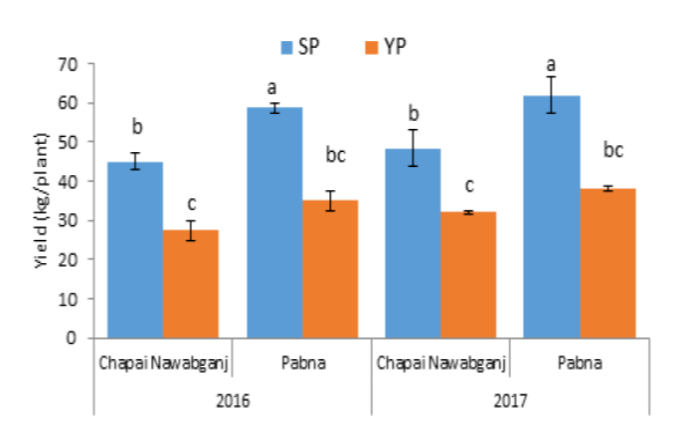


Indian Journal of Science and Technology
DOI: 10.17485/IJST/v13i37.1083
Year: 2020, Volume: 13, Issue: 37, Pages: 3893-3903
Original Article
M Ashraful Islam1*, Alamin Sheikh1, Carrie Waterman2, Md Hosenuzzaman3
1Department of Horticulture, Bangladesh Agricultural University, Mymensingh, 2202, Bangladesh
2Department of Nutrition, University of California, Davis, USA
3Department of Soil Science, Bangladesh Agricultural University, Mymensingh, 2202,
Bangladesh
*Corresponding Author
Email: [email protected]
Received Date:07 July 2020, Accepted Date:28 August 2020, Published Date:06 October 2020
Background/Objectives: Moringa (Moringa oleifera) is a multi-purpose tree with valuable nutritional density found in the leaves and pods. Both seasonal and year-round cultivars are available and consumed in Bangladesh. This study evaluated the qualitative and quantitative morphological characteristics and nutritional content in leaves and pods of moringa cultivars from two major ecological locations in Bangladesh. Methodology: The selected local varieties used were seasonal production (SP: V1) and year-round production (YP: V2) cultivars from the two ecological regions Chapai Nawabganj (L1) and Pabna (L2). Findings: Flowering and fruiting occurred once per year in seasonal cultivar (SP) and three times per year in year-round cultivar (YP). Flowers are zygomorphic; and tripinnate and pinnately compound leaves in both cultivars. The average yield of pods over two years of production for V1 was 45-62 kg/year/plant and 27-38 kg/plant/year for V2. Leaves contained more than two times higher protein (29-36%) compared to pods (11-15%). Similarly, nutrients including calcium and iron were significantly higher in leaves (2314-3487 ppm and 276-418 ppm, respectively) than pods (2017-2032 ppm and 61-68 ppm, respectively). There were no significant differences in potassium content of both cultivars in both location, but pod contained more than four times higher phosphorus (1.5- 1.7%) than leaves (0.34-0.38%). The highest amounts of magnesium (1768-1861 ppm) and sodium (496-535 ppm) were found in pods. Applications: Cultivar and plant part (e.g leaves) can be considered when promoting and utilizing moringa micronutrient for nutritional security. It demands for policies and development actions for production and intensification of moringa in dry parts of the country.
Keywords: Moringa; cultivars; leaves; pods; morphology; nutritional security
© 2020 Islam et al.This is an open-access article distributed under the terms of the Creative Commons Attribution License, which permits unrestricted use, distribution, and reproduction in any medium, provided the original author and source are credited. Published By Indian Society for Education and Environment (iSee).
Subscribe now for latest articles and news.